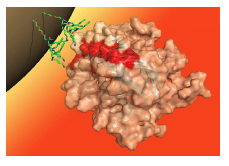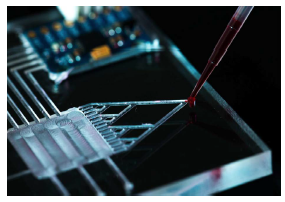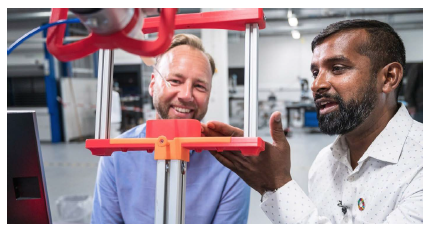2020 was a tough year all around, but the health tech industry emerges as a winner during the pandemic.
 PharmaVOICE started tracking innovation in health technology a couple of years ago. As part of this reporting, we have covered some interesting solutions. In 2020 alone, there was a great deal of activity, much of which was driven by pressures related to the COVID-19 pandemic. And the health tech sector didn’t disappoint in its response to the global pandemic. The upshot was greater innovation, adoption, and understanding of just how much technology can improve the healthcare process. The news ranged from how tech can positively influence the interaction between HCPs and patients, to advances in clinical trial processes, to tracking and tackling COVID, to the surge of healthcare technology companies that went public. It was a big year all around for health technology, and we are happy to provide updates on several of the big areas and trends that molded the sector last year.
PharmaVOICE started tracking innovation in health technology a couple of years ago. As part of this reporting, we have covered some interesting solutions. In 2020 alone, there was a great deal of activity, much of which was driven by pressures related to the COVID-19 pandemic. And the health tech sector didn’t disappoint in its response to the global pandemic. The upshot was greater innovation, adoption, and understanding of just how much technology can improve the healthcare process. The news ranged from how tech can positively influence the interaction between HCPs and patients, to advances in clinical trial processes, to tracking and tackling COVID, to the surge of healthcare technology companies that went public. It was a big year all around for health technology, and we are happy to provide updates on several of the big areas and trends that molded the sector last year.
The Year of Health Tech IPOs
2020 saw many IPOs, including Phreesia, Health Catalyst, Change Healthcare, Progyny, One Medical, Accolade, and GoHealth. And it was about time, analysts reported. Many of the companies had been operating quietly – and doing well — in the background for years. The pandemic created the perfect storm for healthtech IPOs. Companies going public in 2020 were “COVID-advantaged," says Michael Yang, Managing Partner, at OMERS Ventures.
PharmaVOICE covered many of these IPO transformations, including Amwell and GoodRx.
 Amwell, a national telehealth company, went public, at the same time it was rapidly gaining app usage. Amwell’s telemedicine app usage rose by 158% in the United States from January to September 2020. Amwell is aiming to grow its platform to serve the needs of hospitals and health systems, health plans, innovators, and patients.
Amwell, a national telehealth company, went public, at the same time it was rapidly gaining app usage. Amwell’s telemedicine app usage rose by 158% in the United States from January to September 2020. Amwell is aiming to grow its platform to serve the needs of hospitals and health systems, health plans, innovators, and patients.
GoodRx, one of the few companies to file for an IPO this year that is turning a profit, priced its offering between $24 and $28 per share. Its revenue grew 48% in the first half of 2020 to $257 million, up from $173 million in the first half of 2019. GoodRx also brought in $55 million in profit in the first half of 2020, up from $31 million in the first half of 2019. In November, when Amazon Pharmacy launched, GoodRx’s stock, which opened at $64 in September, dropped 6.5% to $33.85. However, analysts, such as Barron’s, and GoodRx’s CEO both have faith that GoodRx’s future will remain bright, in spite of the competition from Amazon.
Experts say they expect to see more health tech companies going public, as well as an increase in mergers in the coming year. One particular merger that sparked interest in 2020 was Teladoc’s purchase of Livongo to create what reports call, “the digital health platform the industry has been waiting for." Through the acquisition, Teladoc users —70 million of them — gain access to Livongo’s coaching programs, which helps it stand apart from other telemed companies. Livongo gains a massive distribution channel for its products as well as a huge network for its coaching services. The deal was considered to be “very smart" for both companies.
Telemedicine
COVID-19 laid bare the need for more remote solutions and technologies that allow for aging-in-place as well as general healthcare at home. Whether starting from scratch or repurposing current tools, companies are flooding the market with remote care and monitoring devices. For example, Nemaura Medical, a medical technology company focused on developing micro-systems-based wearable diagnostic devices, is repurposing its continuous glucose monitor as a temperature sensor for tracking body temperature through the skin as a pivot during COVID-19. The skin patch contains a thermistor that measures skin temperature as an integral part of the device, and the Nemaura device could be repurposed for this standalone function.
Nemaura is considering various options to expedite the launch of a continuous temperature monitor, including potential partnerships and direct-to-consumer sales.
Similarly, care collaboration technology vendor TigerConnect launched TigerTouch, a text message-oriented, audio/visual telehealth system designed to help health systems manage COVID-19 cases.
The mobile-centric healthcare-communications platform enables doctors, nurses, and allied health professionals to communicate securely with patients via video, voice, or text with a single, enterprise-grade app. The system also enables care providers to securely exchange photos, videos, and file attachments on their smartphones.
 We all remember back in 2001 when Proteus Digital Health, one of digital health’s best-known players and the maker of an ingestible sensor for tracking medication adherence, was the vision and the definition of healthtech innovation. Sadly, the company filed for Chapter 11 bankruptcy protection in 2020. Right on its heels, Florida-based etectRx earned FDA approval for its own ingestible pill. The pill’s ID-Cap system is the first device of its kind to transmit digital messages from within the body to an external receiver without need for direct skin contact. The system consists of the ID-Capsule, a standard pharmaceutical capsule containing the ingestible sensor known as the ID-Tag.
We all remember back in 2001 when Proteus Digital Health, one of digital health’s best-known players and the maker of an ingestible sensor for tracking medication adherence, was the vision and the definition of healthtech innovation. Sadly, the company filed for Chapter 11 bankruptcy protection in 2020. Right on its heels, Florida-based etectRx earned FDA approval for its own ingestible pill. The pill’s ID-Cap system is the first device of its kind to transmit digital messages from within the body to an external receiver without need for direct skin contact. The system consists of the ID-Capsule, a standard pharmaceutical capsule containing the ingestible sensor known as the ID-Tag.
This emits a very low power digital message from within the patient after it is ingested and activated by the patient’s stomach fluid. The ID-Cap Reader worn on a lanyard verifies the message is valid and forwards the data to a secure smartphone app and healthcare provider in a secure web-based portal.
Late in 2020, etectRx hired pharma veteran Valerie Sullivan as president and CEO and reported it is in dialogue with pharma companies to help drive commercialization for its novel technology.
Another interesting development in digital pills is Colorado-based Velóce Digital Health’s SmartTab, an ingestible capsule that can be wirelessly controlled via a smartphone to release its contents at precise locations within the gastrointestinal system. SmartTab works using several key technological features. The capsule itself is powered by inductive charging. Once swallowed, the capsule is tracked electronically using a small adhesive patch worn on the skin near the target area. When the capsule approaches the desired spot for administration, the contents can be released automatically or by the user by pushing some buttons on the accompanying iPhone app.
Of all the potential drugs that SmartTab could deliver, the company hopes to start with medications for Crohn’s disease. In 2019, SmartTab completed animal pre-clinical studies and demonstrated that the pill could successfully release its contents at the targeted area upon receiving the wireless signal.
Human clinical studies will begin in 2020 toward the goal of FDA approval. Later in the year, SmartTab was selected to receive funding from OEDIT’s Advanced Industries Accelerator Grant Program. This highly competitive grant allocates funds to recipients during the grant cycle of 2021 for proof-of-concept and early-stage capital and retention grants. These funds support Colorado’s advanced industries to push innovation.
Medical Innovation
2020 was also a year for investigating chip-level technology and its potential for diagnoses, treatment, and drug development.
 For example, a chip, called TriSilix, was developed at Imperial College London, and is considered a micro laboratory that can reportedly perform a scaled-down version of a polymerase chain reaction (PCR) test on the spot, presenting results in just a few minutes. Due to its high portability, the TriSilix device could in theory accelerate the diagnosis of infections and reduce costs by eliminating the need for transport and lab-based testing. And because the tests can be self-administered without the need for a medical professional, those who test positive for an infection such as COVID-19 could immediately isolate themselves to minimize the transmission risk.
For example, a chip, called TriSilix, was developed at Imperial College London, and is considered a micro laboratory that can reportedly perform a scaled-down version of a polymerase chain reaction (PCR) test on the spot, presenting results in just a few minutes. Due to its high portability, the TriSilix device could in theory accelerate the diagnosis of infections and reduce costs by eliminating the need for transport and lab-based testing. And because the tests can be self-administered without the need for a medical professional, those who test positive for an infection such as COVID-19 could immediately isolate themselves to minimize the transmission risk.
Other chips in the news over the year included Draper’s tumor-on-a-chip called EVIDENT (for Ex Vivo Immuno-oncology Dynamic Environment for Tumor). The system enables both precision-controlled perfusion across biopsied tumor fragments and the introduction of checkpoint-inhibitor-treated tumor-infiltrating lymphocytes in a single experiment, according to a report in the International Journal of Molecular Science.
EVIDENT uses organ-on-a-chip technologies to support parallel testing of emerging cancer therapeutics, including ICIs and combination therapies. The current configuration of the platform houses up to 12 tumor fragments contained in parallel fluidic paths, each comprising a microenvironment that supports independent experimental conditions in dynamic studies. The next-generation system currently being designed will support up to 96 parallel experiments on tumor fragments in a dynamic microenvironment. EVIDENT replicates the body’s response to a drug by leveraging unique components, including viable tumor fragments in a 3D microenvironment, and precision-controlled flow to enable tumor perfusion and immune cell trafficking through microfluidic channels. Once precisely controlled concentrations of immune cells are delivered directly to tumors, EVIDENT uses real-time high-resolution imaging and powerful machine-learning algorithms to map and quantify tumor response data at the cellular level, including local tumor killing and penetration of immune cells into the tumor without disrupting the process.
Draper’s EVIDENT system is also an effective tool for patient-specific personalized therapeutics and precision medicine. The precision and scalability of the microfluidic design enables testing of many therapeutic combinations simultaneously, so patients may begin the right treatment, right away.
Earlier in the year, researchers at the University of Houston reported improvements made on their microfluidic brain cancer chip, which allowed for the administration of multiple drugs at the same time. This biomedical group, the Akay Lab, has also enabled their device to conduct parallel testing of drug responses for glioblastoma patients. The potential impact of this feature could be profound, with the glioblastoma being the most common cancerous brain tumor. Accounting for half of all malignant brain tumor cases, glioblastomas render an average five-year survival rate of less than 6%.
These findings were recently published in the IEEE Open Journal of Engineering in Medicine and Biology. This ability to rapidly analyze how effective a cancer drug is would be a drastic improvement in comparison to the traditional way of doing so. By moving toward a microfluidic, multiple drug administration system, the Akay Lab’s device can potentially identify the ideal chemotherapy regimen in as fast as two weeks.
Along with chips, Lawrence Berkeley National Laboratory researchers developed magnetic beads coated with peptoid that can diagnose Alzheimer’s and Parkinson’s, and any other diseases caused by misfolded proteins or prions.
To date it has been difficult to detect such proteins in patient blood samples, often because they are present in very small quantities and closely resemble their correctly folded cousins. The new beads bind to specific misfolded proteins in blood samples, paving the way for rapid and convenient diagnosis of diseases that involve misfolded proteins. By coating magnetic beads with peptoids that mimic the misfolded protein being detected, the beads bind to the protein when they are both present in a blood sample. This results in large protein aggregates. Once the misfolded proteins have bound to the beads, they can be removed from the blood sample using a magnet, and they can then be analyzed for the presence of the misfolded proteins using an assay. The process is quick and convenient and could revolutionize the diagnosis and detection of misfolded protein-based diseases.
COVID-19 Health Tech Solutions
COVID-19 pushed health tech into the forefront for every stakeholder in the healthcare system, and spurred innovation at a rate never seen before. According to a report by the Center for Connected Medicine and KLAS Research, digital solutions and telemedicine increased by nearly 90% since the pandemic. “In some ways, the pandemic helped push through innovation projects that were under consideration and might have taken some time to implement," says Brent Burns, executive VP of UPMC Enterprises.
Many solutions involved robotics, automation, contact tracing, and improving pandemic monitoring through apps and mobile phones.
Due to the pressures of COVID, a team of robotics engineers at the University of Southern Denmark were able to achieve in less than four months what usually takes three years. The team developed the first-ever device that can automatically perform throat swabs without a human clinician being in the vicinity. The robot reaches into the throat and moves a swab against the selected tissue within. Once the sample is collected, it deposits the swab into a glass jar and screws its top closed. Further trials will need to confirm the utility of the new device. To commercialize and manufacture the new robot, the engineers who developed it have started up a company called Lifeline Robotics. The robots are commercially available already.
In July, Taiwan’s Brain Navi developed a new robot to perform nasal swab tests autonomously to prevent cross infections, with the aim to protect healthcare workers and reduce strain on health systems. The Nasal Swab Robot helps to reduce staff-patient contact with highly infectious diseases at the point of testing by autonomously navigating and safely collecting patient samples. The robot automatically recognizes the patient’s facial structure and the nostril’s location independently and gently takes the samples to avoid close contact with patients.
In September, a group of clinicians from the National Cancer Centre Singapore, Singapore General Hospital, and Duke-NUS Medical School partnered with Biobot Surgical Pte Ltd, a medical robotics solutions company, to develop SwabBot, a self-administered robot that allows individuals being swabbed to activate and terminate the swabbing process at will.
Given the highly infectious nature of the COVID-19 virus, minimizing human contact is one way to reduce the spread of the coronavirus and technologies such as the use of robots to perform certain repetitive tasks can not only reduce infection risks for healthcare workers and staff, but also reduce the use of precious manpower.
In a similar vein, COVID-19 patients who are in critical condition in intensive care units need intubation, but this process can be complicated by obtaining an airway precisely. Each patient varies; some can take a minute or more during intubation, potentially leading to fatal consequences. Nihon Kohden launched a video laryngoscope in the United States designed to achieve intubation faster and on the first try. Furthermore, the company claims the product “can help protect clinicians while intubating patients suffering from COVID-19 or other respiratory infections." The company reports the device can help clinicians intubate patients with even difficult airways in 22.9 seconds, well below the 30-second threshold suggested for intubations and up to 33 seconds faster than other devices.
 Heavy hitters like Apple, Google, and Microsoft are definitely contributing to the growth of the health tech industry. For example, in April, Apple and Google announced they were building software into smartphones that would tell people if they were recently in contact with someone who was infected with COVID. The two tech rivals proposed using Bluetooth to notify smartphone users if they had been within six feet of someone who tested positive for Covid-19, using an app developed by their local public health agency. By September, only six states were using the contact tracing apps: Virginia, North Dakota, Wyoming, Alabama, Arizona, and Nevada. Many found it too difficult to implement, as the agencies had to develop their own apps that would connect with the system. To make it easier and faster Apple and Google created a system that they call “Exposure Notifications Express" on behalf of public health authorities, so they no longer need to build an app of their own.
Heavy hitters like Apple, Google, and Microsoft are definitely contributing to the growth of the health tech industry. For example, in April, Apple and Google announced they were building software into smartphones that would tell people if they were recently in contact with someone who was infected with COVID. The two tech rivals proposed using Bluetooth to notify smartphone users if they had been within six feet of someone who tested positive for Covid-19, using an app developed by their local public health agency. By September, only six states were using the contact tracing apps: Virginia, North Dakota, Wyoming, Alabama, Arizona, and Nevada. Many found it too difficult to implement, as the agencies had to develop their own apps that would connect with the system. To make it easier and faster Apple and Google created a system that they call “Exposure Notifications Express" on behalf of public health authorities, so they no longer need to build an app of their own.
While this advancement helps overcome that obstacle, there are several remaining, and experts are not sure automated contact tracing will be as accurate as old-fashioned manual recording. There needs to be enough people to opt-into the system for it to become effective.
Early in the pandemic, Orion Health, a provider of population health management solutions, was quick to develop real-time automated COVID-19 reporting through a software platform.
The core functionality of the solution includes the ability to remotely monitor and engage patients in their homes, facilitating communication between quarantined people and the healthcare service, as well as maintaining visibility of those recently discharged. The intention is to alleviate spikes in demand on health systems, reducing the risk of further spread of the virus and flattening the epidemiological curve.
Over time the solution will increasingly use artificial intelligence (AI) to allow providers to identify patients at risk of deterioration and optimize their care. This will allow resources to be allocated to those most in need.
As we look forward to 2021, we can only imagine the varied applications that health tech will take to continue to improve patient outcomes, as well as speed the care process. The sector’s meteoric growth will most likely continue after the pandemic, with one study estimating a market value of $185.6 billion by 2026.(PV)


















